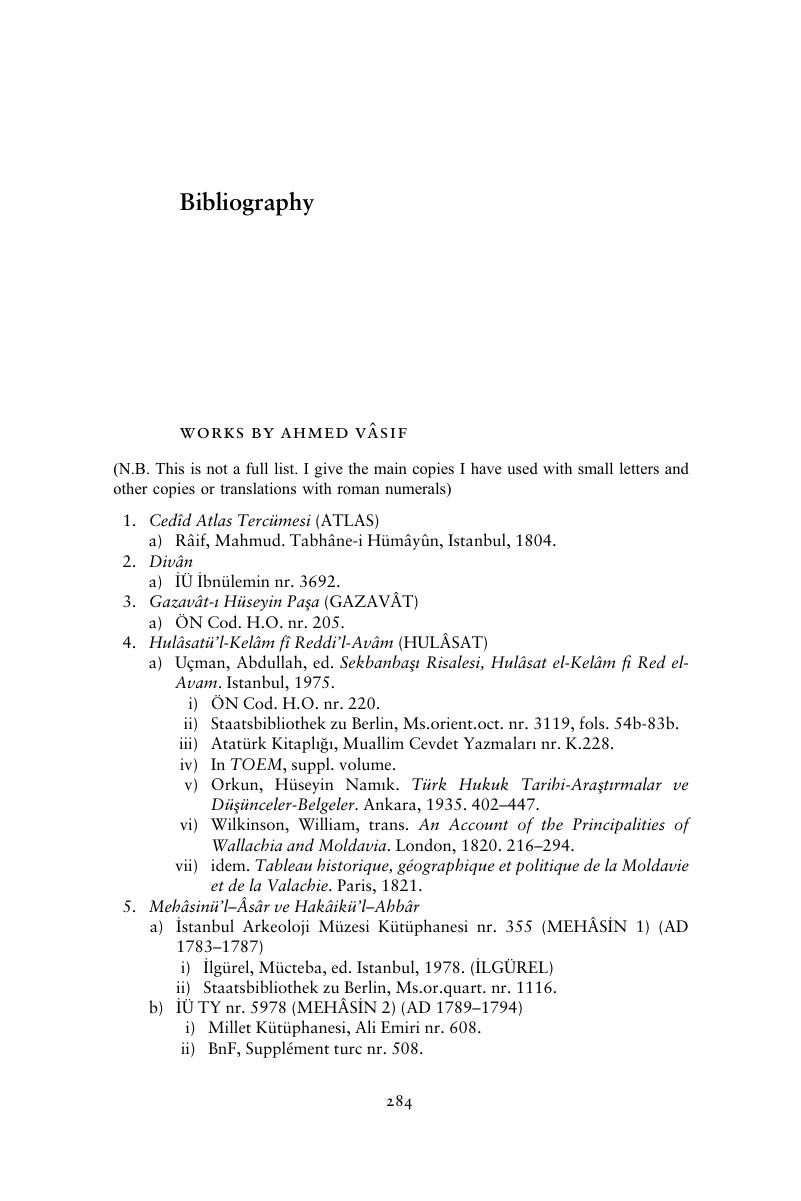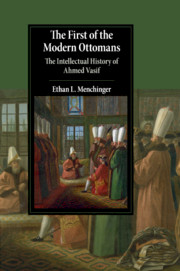Book contents
- The First of the Modern Ottomans
- Reviews
- Cambridge Studies in Islamic Civilization
- The First of the Modern Ottomans
- Copyright page
- Dedication
- Contents
- Illustrations
- Maps
- Acknowledgments
- Note on the Text
- Dramatis Personae
- Chronology
- Abbreviations
- Maps
- Introduction
- 1 Out of the East: Early Life (ca. 1735–1768)
- 2 At War (1768–1774)
- 3 Years of Faction and Reform (1774–1787)
- 4 “Honorable Exile”: In Spain (1787–1788)
- 5 At War (1788–1792)
- 6 Vâsıf and the New Order (1792–1800)
- 7 The Height of Fame (1800–1806)
- Epilogue: Vâsıf as Ancient and Modern
- Appendix On the Authorship of the Final Word to Refute the Rabble
- Glossary
- Bibliography
- Index
- Other titles in the series
- References
Bibliography
Published online by Cambridge University Press: 30 August 2017
- The First of the Modern Ottomans
- Reviews
- Cambridge Studies in Islamic Civilization
- The First of the Modern Ottomans
- Copyright page
- Dedication
- Contents
- Illustrations
- Maps
- Acknowledgments
- Note on the Text
- Dramatis Personae
- Chronology
- Abbreviations
- Maps
- Introduction
- 1 Out of the East: Early Life (ca. 1735–1768)
- 2 At War (1768–1774)
- 3 Years of Faction and Reform (1774–1787)
- 4 “Honorable Exile”: In Spain (1787–1788)
- 5 At War (1788–1792)
- 6 Vâsıf and the New Order (1792–1800)
- 7 The Height of Fame (1800–1806)
- Epilogue: Vâsıf as Ancient and Modern
- Appendix On the Authorship of the Final Word to Refute the Rabble
- Glossary
- Bibliography
- Index
- Other titles in the series
- References
Summary

- Type
- Chapter
- Information
- The First of the Modern OttomansThe Intellectual History of Ahmed Vasif, pp. 284 - 301Publisher: Cambridge University PressPrint publication year: 2017



